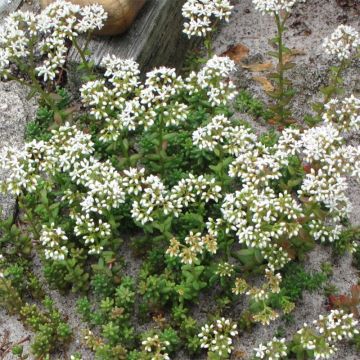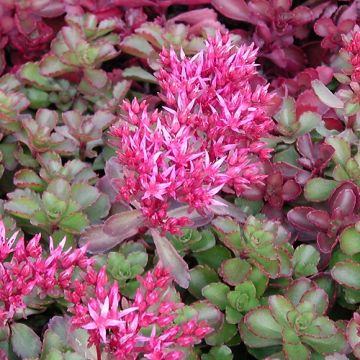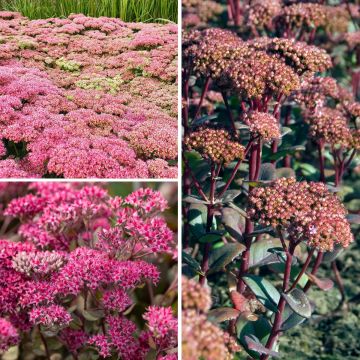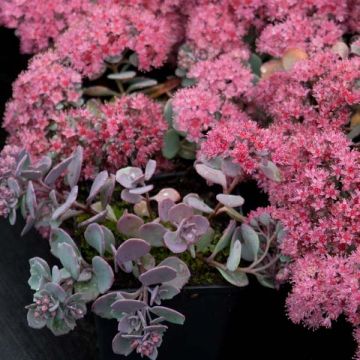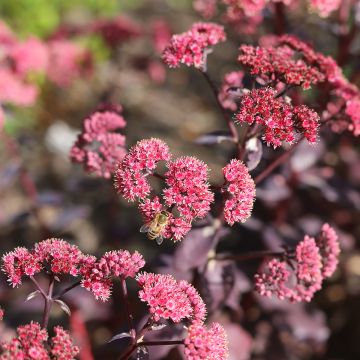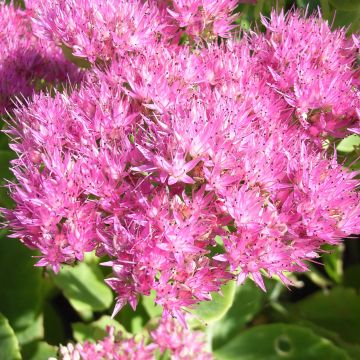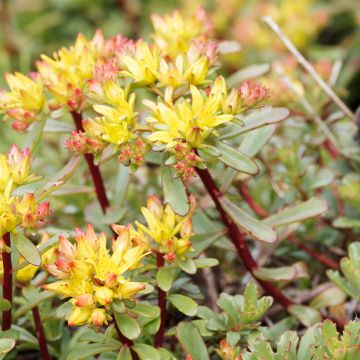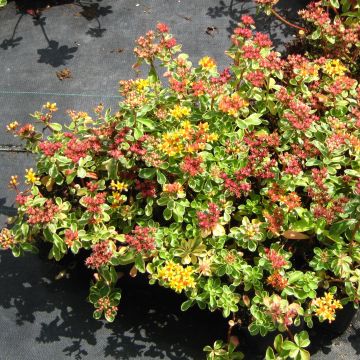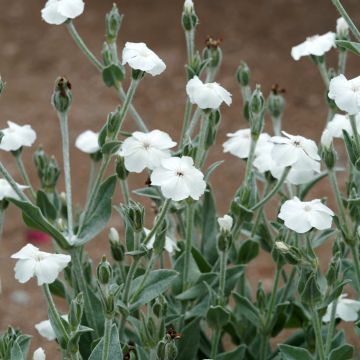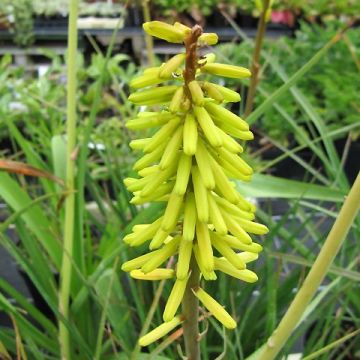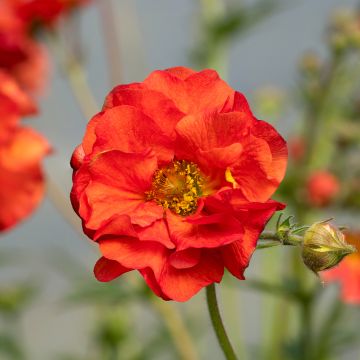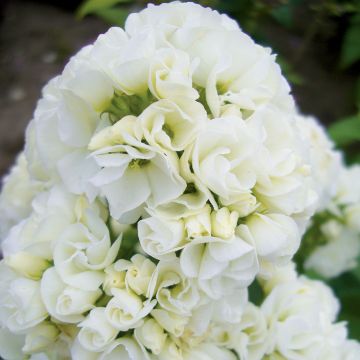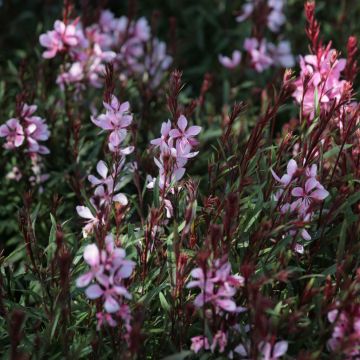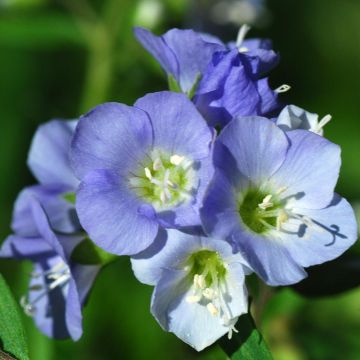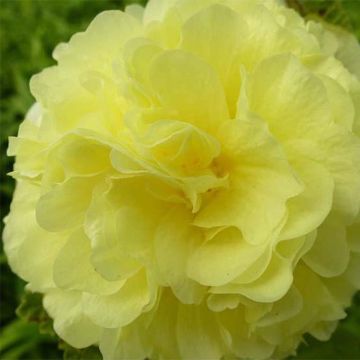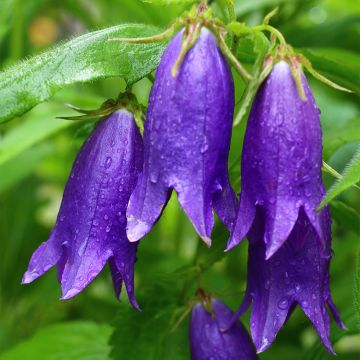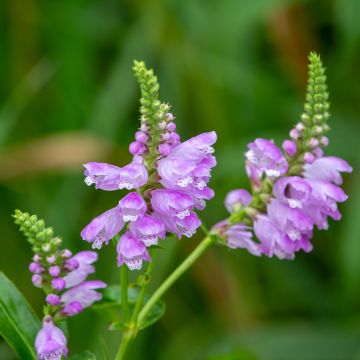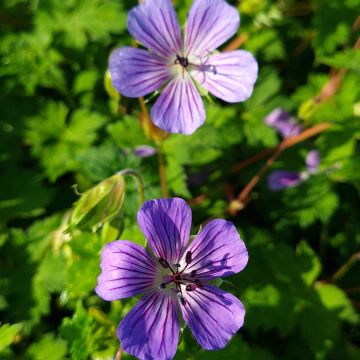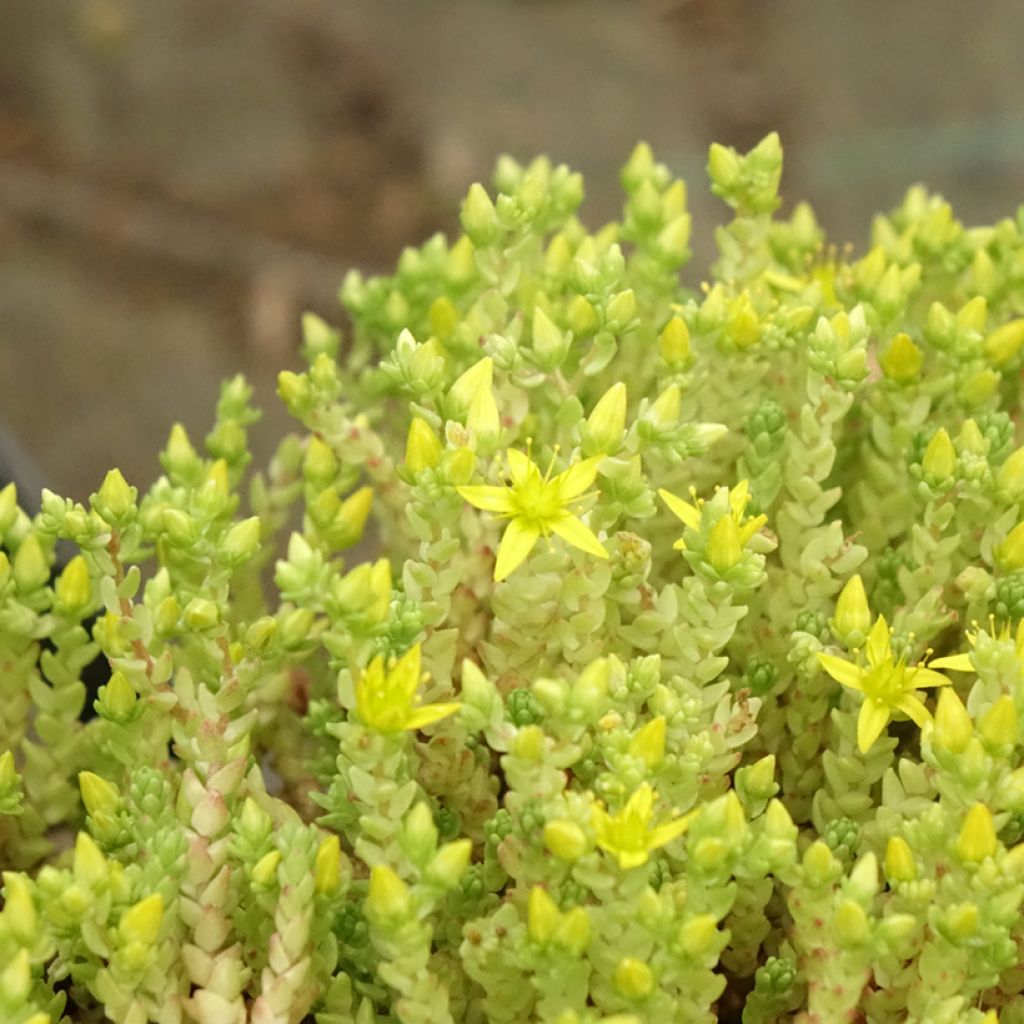

Sedum acre Yellow Queen - Stonecrop
Sedum acre Yellow Queen - Stonecrop
Sedum acre Yellow Queen
Biting Stonecrop, Goldmoss Stonecrop, Mossy Stonecrop, Wall-Pepper
This item cannot be shipped to the selected country
Delivery charge from €5.90
More information
Schedule delivery date,
and select date in basket
This plant carries a 12 months recovery warranty
More information
We guarantee the quality of our plants for a full growing cycle, and will replace at our expense any plant that fails to recover under normal climatic and planting conditions.
From €5.90 for pickup delivery and €6.90 for home delivery
Express home delivery from €8.90.
Does this plant fit my garden?
Set up your Plantfit profile →
Description
Sedum acre 'Yellow Queen', also known as wall pepper, is a small evergreen ground cover with bright foliage. Persistent and yellowish-green, its multiple and tiny needle-like leaves quickly form a carpet that colonises the most difficult terrains. Its long stems easily take root in all crevices and thrive in poor and dry soils, preferably in the sun. Its yellow flowering, in a myriad of stars, is a blessing for insects during June and July.
From the Crassulaceae family, this yellow stonecrop is proof that poor soil can grow beautiful specimens with vibrant hues. If your soil is poor, rather dry, even rocky or slightly chalky, you can still benefit from this hardy perennial (which withstands temperatures below -15°C (5°F)), which requires no maintenance and promises to enliven the garden with visits from butterflies. Stonecrops are easy-to-care-for succulents that have flowers and foliage in various shades, which can be used to create colourful palettes, whether in flower beds, pots, or rockeries. They should not be subjected to excess humidity in winter, nor covered with dead leaves (as this may cause them to deteriorate). Plant them in a sunny, even scorching, exposure. It will thrive in a few millimetres of substrate.
This creeping sedum has a spreading habit that can reach a width of 45cm (18in), thanks to its stoloniferous stems. The stems end their course by slightly arching to a maximum height of 10cm (4in). They bear small ovate triangular leaves measuring barely 2 to 3mm. Alternate and imbricate, they appear to form a rosette. This foliage displays a bright yellowish-green shade. These nuances vary, like most of its cousins in the same genus, depending on climatic conditions: the amount of light and water provide the opportunity to lean towards green or yellow. Its lively and delicate flowering further enhances this sparkling effect. Its miniature corymb inflorescences consist of multiple star-shaped yellow flowers, highly prized by insects that continue to forage on them. Perched on the stems, they can double the height of this small carpet.
Sedum acre 'Yellow Queen' brings light to every corner of the courtyard and garden. It easily combines with all rockery plants, requires no monitoring, and colonises abandoned spaces (making it suitable for green roofs). Its small touches of light should be strategically placed to attract attention: at the base of a stone staircase, along a pathway, or in a pot of complementary colour. Easy and carefree, these miniature perennials quickly inspire the desire to multiply them. Consider choosing companions with staggered flowering and dark foliage for a variegated and joyful rockery.
Report an error about the product description
Sedum acre Yellow Queen - Stonecrop in pictures


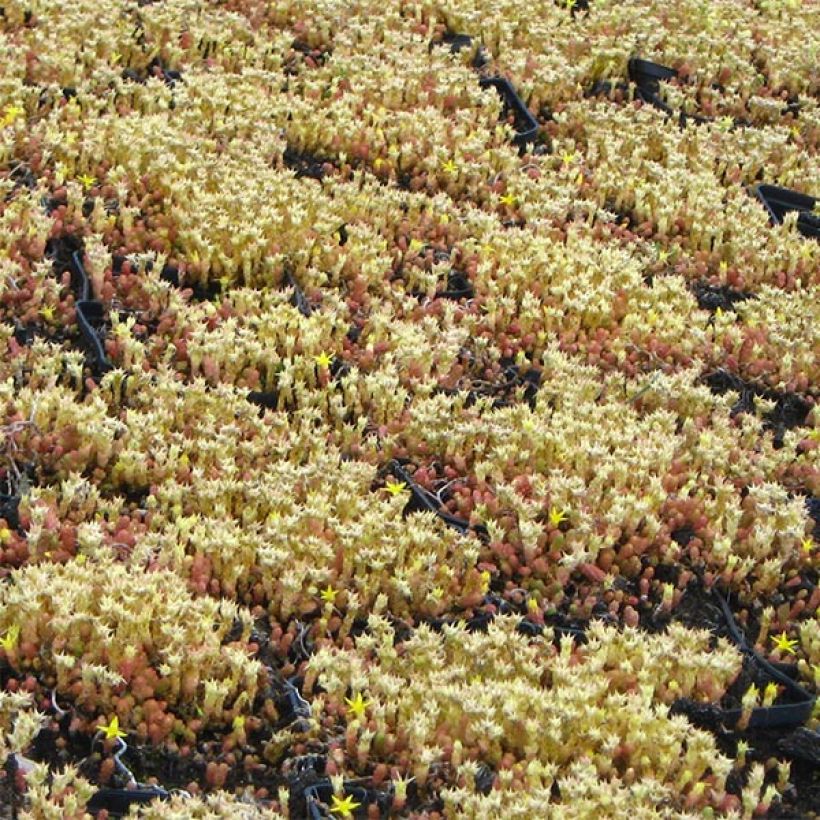

Flowering
Foliage
Plant habit
Botanical data
Sedum
acre
Yellow Queen
Crassulaceae
Biting Stonecrop, Goldmoss Stonecrop, Mossy Stonecrop, Wall-Pepper
Cultivar or hybrid
Other Sedum
Planting and care
Sedum acre 'Yellow Queen' likes hot exposures and dry, poor soil. You can plant it in the ground or in a container in spring or autumn. Ensure the soil is well-drained and add some gravel if necessary. Conversely, if you place it in a rockery or on a wall, just give it a little compost to help it to establish. Afterwards, it will manage on its own.
If you want to multiply it, simply cut some roots already attached to their support and move them by burying them slightly.
Take care of it by making sure it doesn't get covered in dead leaves or vegetation residue and by possibly removing small faded inflorescences.
Planting period
Intended location
Care
-
, onOrder confirmed
Reply from on Promesse de fleurs
Summer flowering perennials
Haven't found what you were looking for?
Hardiness is the lowest winter temperature a plant can endure without suffering serious damage or even dying. However, hardiness is affected by location (a sheltered area, such as a patio), protection (winter cover) and soil type (hardiness is improved by well-drained soil).

Photo Sharing Terms & Conditions
In order to encourage gardeners to interact and share their experiences, Promesse de fleurs offers various media enabling content to be uploaded onto its Site - in particular via the ‘Photo sharing’ module.
The User agrees to refrain from:
- Posting any content that is illegal, prejudicial, insulting, racist, inciteful to hatred, revisionist, contrary to public decency, that infringes on privacy or on the privacy rights of third parties, in particular the publicity rights of persons and goods, intellectual property rights, or the right to privacy.
- Submitting content on behalf of a third party;
- Impersonate the identity of a third party and/or publish any personal information about a third party;
In general, the User undertakes to refrain from any unethical behaviour.
All Content (in particular text, comments, files, images, photos, videos, creative works, etc.), which may be subject to property or intellectual property rights, image or other private rights, shall remain the property of the User, subject to the limited rights granted by the terms of the licence granted by Promesse de fleurs as stated below. Users are at liberty to publish or not to publish such Content on the Site, notably via the ‘Photo Sharing’ facility, and accept that this Content shall be made public and freely accessible, notably on the Internet.
Users further acknowledge, undertake to have ,and guarantee that they hold all necessary rights and permissions to publish such material on the Site, in particular with regard to the legislation in force pertaining to any privacy, property, intellectual property, image, or contractual rights, or rights of any other nature. By publishing such Content on the Site, Users acknowledge accepting full liability as publishers of the Content within the meaning of the law, and grant Promesse de fleurs, free of charge, an inclusive, worldwide licence for the said Content for the entire duration of its publication, including all reproduction, representation, up/downloading, displaying, performing, transmission, and storage rights.
Users also grant permission for their name to be linked to the Content and accept that this link may not always be made available.
By engaging in posting material, Users consent to their Content becoming automatically accessible on the Internet, in particular on other sites and/or blogs and/or web pages of the Promesse de fleurs site, including in particular social pages and the Promesse de fleurs catalogue.
Users may secure the removal of entrusted content free of charge by issuing a simple request via our contact form.
The flowering period indicated on our website applies to countries and regions located in USDA zone 8 (France, the United Kingdom, Ireland, the Netherlands, etc.)
It will vary according to where you live:
- In zones 9 to 10 (Italy, Spain, Greece, etc.), flowering will occur about 2 to 4 weeks earlier.
- In zones 6 to 7 (Germany, Poland, Slovenia, and lower mountainous regions), flowering will be delayed by 2 to 3 weeks.
- In zone 5 (Central Europe, Scandinavia), blooming will be delayed by 3 to 5 weeks.
In temperate climates, pruning of spring-flowering shrubs (forsythia, spireas, etc.) should be done just after flowering.
Pruning of summer-flowering shrubs (Indian Lilac, Perovskia, etc.) can be done in winter or spring.
In cold regions as well as with frost-sensitive plants, avoid pruning too early when severe frosts may still occur.
The planting period indicated on our website applies to countries and regions located in USDA zone 8 (France, United Kingdom, Ireland, Netherlands).
It will vary according to where you live:
- In Mediterranean zones (Marseille, Madrid, Milan, etc.), autumn and winter are the best planting periods.
- In continental zones (Strasbourg, Munich, Vienna, etc.), delay planting by 2 to 3 weeks in spring and bring it forward by 2 to 4 weeks in autumn.
- In mountainous regions (the Alps, Pyrenees, Carpathians, etc.), it is best to plant in late spring (May-June) or late summer (August-September).
The harvesting period indicated on our website applies to countries and regions in USDA zone 8 (France, England, Ireland, the Netherlands).
In colder areas (Scandinavia, Poland, Austria...) fruit and vegetable harvests are likely to be delayed by 3-4 weeks.
In warmer areas (Italy, Spain, Greece, etc.), harvesting will probably take place earlier, depending on weather conditions.
The sowing periods indicated on our website apply to countries and regions within USDA Zone 8 (France, UK, Ireland, Netherlands).
In colder areas (Scandinavia, Poland, Austria...), delay any outdoor sowing by 3-4 weeks, or sow under glass.
In warmer climes (Italy, Spain, Greece, etc.), bring outdoor sowing forward by a few weeks.

































